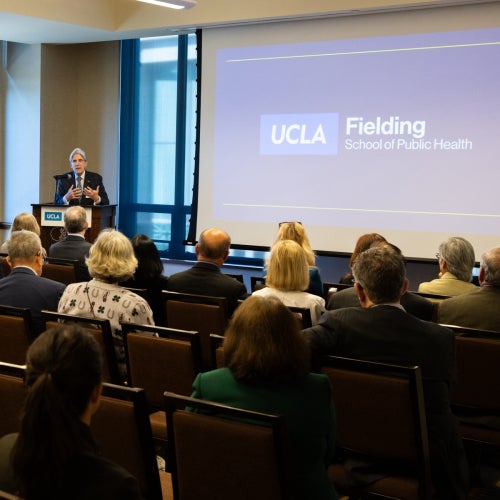In the vaccine fight, measles is winning
Dr. Jonathan Fielding, distinguished professor of health policy and management, calls attention to the measles outbreak as a public-health emergency.
Why is measles making a comeback, especially in the U.S. almost 20 years after it was officially declared eradicated? Much media attention has focused on the erosion of herd immunity due to pockets of unimmunized children and deservedly so. But another important reason is the public perception that measles is a mild childhood disease — uncomfortable for a few days but not serious.
We have forgotten how terrible the measles can be. Many parents think it is mild, yet few have ever seen a child with the disease; neither have many practicing pediatricians, since the disease was rare in the U.S. for years before it was officially declared “eradicated.” Even in a “mild” case of measles (rubeola), the patient suffers from a variety of very uncomfortable symptoms, including a high fever up to 104 F, red, watery eyes, runny nose and cough, followed in three days by a red, itchy and bumpy rash over much of the body.
Unvaccinated children and adults over 30 are more likely to have complications. Most common are diarrhea, ear infections and extreme dehydration. But measles can also cause very severe complications. As many as one of every 20 children gets pneumonia and that complication in turn accounts for 60 percent of measles-related deaths. And measles during pregnancy can cause premature births.
Faculty Referenced by this Article

Professor of Community Health Sciences & Health Policy and Management, and Associate Dean for Research
Nationally recognized health services researcher and sociomedical scientist with 25+ years' experience in effectiveness and implementation research.

EMPH Academic Program Director with expertise in healthcare marketing, finance, and reproductive health policy, teaching in the EMPH, MPH, MHA program

Dr. Ron Andersen is the Wasserman Professor Emeritus in the UCLA Departments of Health Policy and Management.

Dr. Michelle S. Keller is a health services researcher whose research focuses on the use and prescribing of high-risk medications.




































































